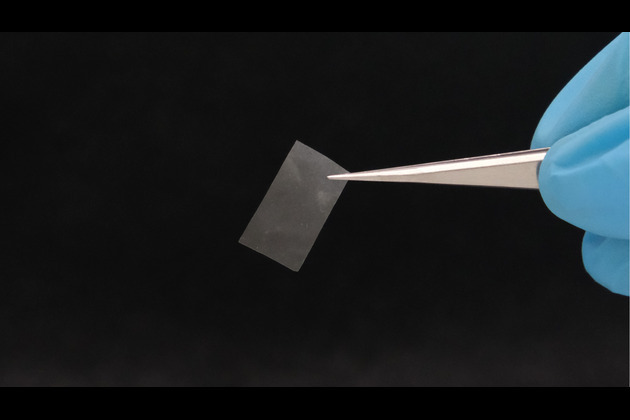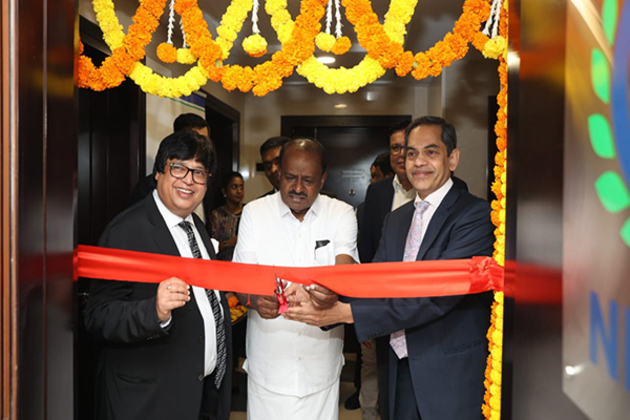Scientists in Zurich develop living material with unique properties
Anabelle Colaco
16 Jun 2025, 16:20 GMT+10

- In a breakthrough that could reshape the future of sustainable materials, scientists at Empa’s Cellulose and Wood Materials laboratory in Zurich have developed an extraordinary biodegradable material—made from fungi
- Engineered from the living structure of fungal mycelium and its natural matrix, this new material is tear-resistant, multifunctional, fully biodegradable—and even edible
- What makes this innovation remarkable is not just its eco-friendly profile but also its performance
ZURICH, Switzerland: In a breakthrough that could reshape the future of sustainable materials, scientists at Empa's Cellulose and Wood Materials laboratory in Zurich have developed an extraordinary biodegradable material—made from fungi.
Engineered from the living structure of fungal mycelium and its natural matrix, this new material is tear-resistant, multifunctional, fully biodegradable—and even edible.
What makes this innovation remarkable is not just its eco-friendly profile but also its performance. Traditionally, biodegradable materials made from natural polymers like cellulose, lignin, or chitin fall short in strength or flexibility. To improve them, chemical treatments are often used, sacrificing sustainability. Empa's living material elegantly sidesteps that trade-off.
The team turned to the split-gill mushroom, a common edible fungus that grows on decaying wood. Its underground root-like network, known as mycelium, is already being studied for its potential in material science. But unlike other processes that strip the mycelium of its natural elements, Empa researchers chose to use it whole—preserving not just the structural fibers (called hyphae) but also the extracellular matrix the fungus produces as it grows.
"The fungus uses this matrix to give itself structure and special properties," says Empa researcher Ashutosh Sinha. "Why shouldn't we do the same?"
That matrix contains two key substances: schizophyllan, a nanofiber-forming polysaccharide, and hydrophobin, a soap-like protein. Together, these give the material its strength and adaptability. Hydrophobins are especially good at bridging water and oil—making them ideal for creating stable emulsions, such as those found in mayonnaise or salad dressing.
In fact, Empa researchers have already used their living material to create both a plastic-like film and a biologically stable emulsion, which may be the first of its kind to grow more stable over time. "This is probably the only emulsion that gets stronger the longer it sits," Sinha notes.
Even better, the mushroom-derived material is entirely non-toxic, edible, and biocompatible. The split-gill mushroom is already widely eaten, which opens doors to safe applications in cosmetics, food, and packaging.
In another experiment, the team produced thin, strong films from the mycelium by aligning the fibers to maximize tensile strength—combining the structure of traditional fiber processing with the unique advantages of living materials. "Our mycelium is essentially a living fiber composite," Sinha explains.
By fine-tuning the conditions under which the fungus grows, the researchers can control the material's properties—possibly even experimenting with other fungal species to produce different functional compounds. However, working with living materials isn't without its challenges.
"Biodegradable materials always react to their environment," warns Nyström. "We want to find applications where this interaction is not a hindrance but maybe even an advantage."
The mycelium's biodegradability is just one aspect—it's also a biodegrader itself, capable of decomposing wood and other plant materials.
Sinha suggests, "Instead of compostable plastic bags, it could be used to make bags that compost the organic waste themselves."
Since the fungus can also degrade plant matter, it could double as both a container and composter.
Looking ahead, the team also sees potential in sustainable electronics. The fungal material reversibly responds to humidity, making it a candidate for biodegradable moisture sensors.
It turns out that nature has already built a high-performance system. Empa's team is simply learning to work with it.
In another initiative, Nyström's team is integrating this living material with two other research projects from the Cellulose and Wood Materials laboratory: the fungal biobattery and the paper battery.
"We want to produce a compact, biodegradable battery whose electrodes consist of a living 'fungal paper,'" reveals Sinha.
 Share
Share
 Tweet
Tweet
 Share
Share
 Flip
Flip
 Email
Email
Watch latest videos
Subscribe and Follow
Get a daily dose of Rio De Janeiro Sun news through our daily email, its complimentary and keeps you fully up to date with world and business news as well.
News RELEASES
Publish news of your business, community or sports group, personnel appointments, major event and more by submitting a news release to Rio De Janeiro Sun.
More InformationSouth America
SectionPM Narendra Modi departs for five-nation visit
New Delhi [India], July 2 (ANI): Prime Minister Narendra Modi departed for a five-nation visit on Wednesday, during which he will attend...
"Very excited": Indian diaspora overjoyed ahead of PM Modi's visit to Ghana
Accra [Ghana], July 2 (ANI): Ahead of Prime Minister Narendra Modi's visit to Ghana, members of the Indian diaspora in the country...
BOLIVIA-LA PAZ-FM-INTERVIEW
(250702) -- LA PAZ, July 2, 2025 (Xinhua) -- Bolivian Foreign Minister Celinda Sosa Lunda is pictured during an interview with Xinhua...
PM Modi's upcoming Ghana visit to be first by an Indian Prime Minister in three decades: Envoy Manish Gupta
Accra (Ghana) [India], July 2 (ANI): Prime Minister Narendra Modi's upcoming visit to Ghana will be the first by an Indian Prime Minister...
NMDC expands global footprint with its new office in Dubai, forging global pathways in mining
Hyderabad (Telangana) [India], July 1 (ANI): NMDC, India's largest iron ore producer, marked a significant milestone with the inauguration...
FIFA Club WC: Last two QF spots up for grabs as Real Madrid, Dortmund among teams in action
New Delhi [India], July 1 (ANI): The last two spots for the quarterfinals of the FIFA Club World Cup will be sealed by either Spanish...
International
SectionTrump hints at DOGE investigation of Musk subsidies
WASHINGTON, DC - U.S. President Donald Trump on Tuesday claimed Elon Musk's success has been built on government subsidies. Without...
Native leaders, activists oppose detention site on Florida wetlands
EVERGLADES, Florida: Over the weekend, a diverse coalition of environmental activists, Native American leaders, and residents gathered...
Beijing crowds cheer AI-powered robots over real soccer players
BEIJING, China: China's national soccer team may struggle to stir excitement, but its humanoid robots are drawing cheers — and not...
COVID-19 source still unknown, says WHO panel
]LONDON, U.K.: A World Health Organization (WHO) expert group investigating the origins of the COVID-19 pandemic released its final...
Fox faces $787 million lawsuit from Newsom over Trump phone call
DOVER, Delaware: California Governor Gavin Newsom has taken legal aim at Fox News, accusing the network of deliberately distorting...
DeepSeek faces app store ban in Germany over data transfer fears
FRANKFURT, Germany: Germany has become the latest country to challenge Chinese AI firm DeepSeek over its data practices, as pressure...













